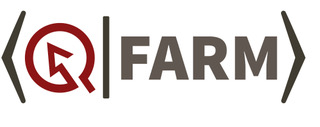Spotlight! Agnetta Cleland

Agnetta Cleland, Ph.D. Physics
What first got you excited about science?
I've always enjoyed making stuff, and I think this impulse was redirected toward science / engineering through a program at my high school called the Engineering Academy. Along with a team of 32 classmates, we learned CAD and programming, worked in the machine shop, and built a robot to compete in FRC (FIRST Robotics Competition). The process of designing, prototyping, and troubleshooting was really fun for me, and is something that drew me toward experimental science as well.
What got you excited about quantum science?
I loved my undergraduate quantum mechanics class at UChicago. Apart from the new and intriguing concepts, I had a great professor -- Carlos Wagner -- whose exuberant personality made lectures fun and exciting. I knew I wanted to work with quantum systems, and when I started doing research in quantum labs, I enjoyed how the projects involved engineering and design work with lots of room for creativity. The modular nature of these projects allowed me a lot of independence, which is another thing I like about being in this field.
Who are you working with? Research areas, projects, etc.
I've been working with Prof. Amir Safavi-Naeini in the Applied Physics department for the past five years, and I just defended my thesis in January. My work is in a subfield called quantum acoustics – we integrate superconducting qubits with nanomechanical resonators to prepare quantum states of vibrational motion. I've worked on two main projects – one was published last year, where we showed single-phonon control and quantum entanglement of two mechanical oscillators. The second, which I recently submitted for publication, studies decay and decoherence of phonons in the quantum limit. We measure frequency shifts of the qubit to resolve the energy levels of the mechanical mode, which is the central measurement principle in both experiments.
What made you decide to come to Stanford?
There's a lot of great research happening at Stanford in a tremendous range of topics, and that certainly was an important factor. But the deciding point was more about lifestyle and culture. When I visited as a prospective student, I liked the friendly atmosphere of the department, and the students here seemed to be leading happy and well-rounded lives. (It may be a cliche to talk about the weather, but I'm sure that plays a role!)
Where do you see quantum science going?
With quantum computing, there has been so much investment from companies, in so many competing platforms. It'll be interesting to see how that landscape evolves. In the next few years I think we will see substantial advancements in error correction protocols of various flavors. For nanomechanical systems, I also think there is a lot of potential for quantum sensing applications, which could be useful to fields outside of physics.
What are your hobbies?
A lot of my hobbies are creative – last year I started doing pottery at Stanford's ceramics studio, which is my main thing at the moment. I've also been into drawing, painting, and cooking since I was a kid. I grew up in California, so I also love hiking and being outside!
Do you have a pet/favorite plant? If so, do you like them more or less than Jon’s cat Emmy?
I have many houseplants, but my favorite is a mini monstera (rhaphidophora tetrasperma) which has climbed about 6 feet up my wall ever since I moved it into a corner spot on my desk. Emmy is arguably more impressive though – hard to compete with a cat who is comfortable perching on people's shoulders.
